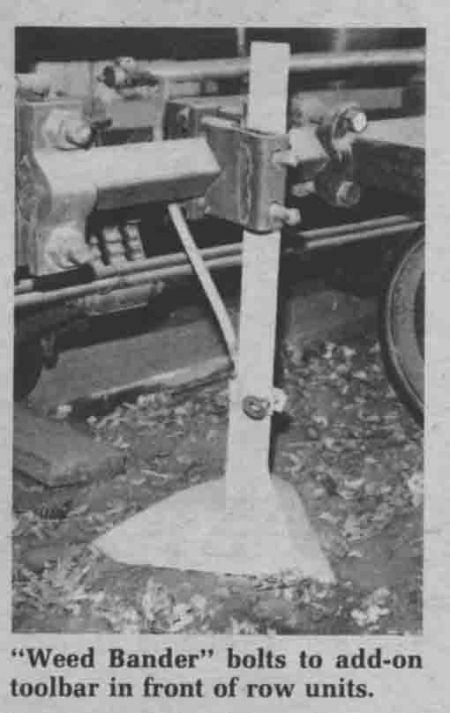
Several years ago, Kenneth Smith decided he was spending too much on chemical weed killers and that some of the herbicides he was using were dictating the way he farmed because of carry over problems. So, he designed and began using a herbicide bander that works so well both he, and many of his neighbors, have cut their chemical costs and have gone back to rotating their corn ground.
Smith's bander consists of a wide, slightly curved sweep that mounts in front of each planter row and rides horizontally just under the ground surface. Beneath the sweep is a special flood jet nozzle -- protected from plugging by a small metal shield -- that sprays a 12-in. band of chemical out behind the sweep. The seed is then planted just below and directly in the center of the chemical band so that there's an almost perfect strip of weed protection on the row.
"On 36-in. rows we save two-thirds of our previous chemical cost and a trip over the fields to incorporate. Also, when using Atrazine, there is only one third as much chemical in the ground so we no longer have a carryover problem and are able to follow up corn with wheat with no crop loss," Smith told FARM SHOW.
The herbicide bander's shanks mount on an extra toolbar installed on the front of the planter. Max-Emerge planters are equipped for an extra bar but International and other planters have to be fitted with extra brackets to hold the bar. Smith sells the bander and shank equipped with the flood nozzle. The buyer supplies the toolbar and brackets to hold the shanks.
Smith uses the same spray rates with his bander as for broadcast spraying. He says the sweeps take practically no extra power to pull in conventional tilled ground -- he hasn't used them in no-till ground -- and, after several thousand acres, sees virtually no wear on his sweeps or those of his neighbor-customers. He says the only problems with the herbicide banders so far has been a tendency to gum up in some wet soils.
